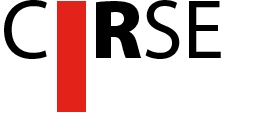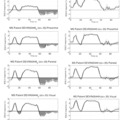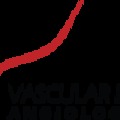
Mielin nélküli autoimmunitás?
Dr. Michael Dake a Stanford Egyetemről vendég előadóként a CCSVI kezelések mellett foglalt állást. Itt olvasható a teljes beszéd (és ennek a posztnak a legvégén angolul), most csak egy fontos megfigyelést emelnék ki, amire viszont várnám a választ a neurológus orvosainktól, (msccsvi@gmail.com) ígérem közzéteszem blogomon.
Underappreciated in the midst of these clashing positions is one other example of a similar venous lesion with potential relevance to MS – sheathing of retinal veins. This cuffing or sheathing of veins can be appreciated on fundoscopic examination of the eyes and may be associated with retinal vein thrombosis, optic neuritis and vision loss. In the majority of cases when it is diagnosed during an evaluation of disturbed vision, it occurs in patients with MS. Studied extensively at the Mayo Clinic, it is not however singularly associated with cases of established MS. Its frequency among MS patients is estimated to range from 11% to 42%. After fluoroscein dye administration, it is possible to observe leakage of dye around the retinal veins and histologically, the veins display a thickened wall similar to appearances observed in other chronically obstructed venous territories.
When contemplating the possible association between venous obstruction, blood-brain barrier leakage, myelin destruction and immune mechanisms responsible for the initiation of MS, it is interesting to note that the retinal nerve fibres are not myelinated in 99% of the population.
Dr. Dake arról beszél, hogy a szemben lévő vénákban kontrasztanyag használatával megfigyelhető, hogy a vénafal "átereszt", ami neurológiai látás problémákat eredényezhet. Ezek jellemzően SM betegekben figyelhetőek meg. És itt jön az érdekesség: a retinában található ideget a populáció 99% -ában nem borítja mielin védőbevonat. Itt valószínűleg arra céloz Dake, hogy ez legalábbis megkérdőjelezi az SM kizárólagos autoimmun eredetét, mely szerint az immunrendszer megtámadja a mielint. Ugyanis ha nincsen a retina idegen mielin, akkor mégis mit támad meg az immunrendszer?
(Szerk megj: egyébként Bővebben a témáról itt lehet olvasni)
Aztán Dake beszél arról, hogy az eddigi eredmények alapján igenis szükséges azonnal elkezdeni a jól dokumentált kutatásokat. Szerinte eddig mintegy 15ezer (!) SM beteget kezeltek vénatágítással, viszont rossz az utánkövetés, mert a betegek külföldre kénytelenek járni a tágításokra. ezért lenne szükség a jól dokumentált kutatásokra.
Szerinte a CCSVI nem a kizárólagos oka az SM-nek viszont nagyon jól illeszkedik a puzzle-be. Nem minden CCSVI betegből lesz SM beteg, ahogyan más betegségekre való hajlamnál sem feltétlen alakul ki a betegség. (pl. Alzheimer)
Természetesen erre megvolt dr. Reekers és dr. Doepp CCSVI ellenes érvelése is, de gondolom ez majd megjelenik a magyar szakkommentárokban (és csak ez). Így kerek a világ sajnos.
Új támogató tanulmányok!
A CIRSE kongresszuson posztereken (lásd a poszt végén angolul!) is foglalkoztak még a CCSVI-vel a következő eredményekkel:
P-237 - Evaluation of hemodynamic changes using dynamic susceptibility contrast-enhanced (DSC) MRI in patients with MS and Zamboni’s CCSVI
Olasz kutatók 42 SM betegből 32-nél kimutatták a Zamboni féle CCSVI kritériumokat. 10 kontroll betegnél nem. Azt találták, hogy az SM betegek, akiknél a CCSVI is jelen volt, abnormális keringési paraméterei vannak.
P-492 - Usefulness of IVUS in diagnosis of chronic cerebrospinal venous insufficiency and multiple sclerosis
A tanulmányban 13 SM beteget vizsgáltak vénán belüli ultrahanggal (IVUS), akiknél előzőleg hagyományos ultrahanggal már megállapították a CCSVI jelenlétét. Arra jutottak, hogy az IVUS nagyon hasznos eszköz a véna billentyűk vizsgálatánál, amiket amúgy nem tudnak semmilyen más eszközzel vizsgálni.
P-504 - Initial experience treating chronic cerebro spinal venous insufficiency (CCSVI): preliminary results in 15 patients
15 SM beteget kezeltek vénatágítással, akik közül 10 beteg 3 hónap alatt mérhető EDSS javulást mutatott! A CCSVInek szerintük nagyon szoros kapcsolata van az SM-mel.
És végül hadd idézzem dr. Sclafani beszámolóját a CIRSE konferenciáról, aki dr. Dake-kel együtt érkezett Amerikából Münchenbe:
"... a CIRSE CCSVI szekciója egy paródia volt, ami sokszor személyes támadásokba torkollott ellenük. Szerinte dr. Reekers a bizonyíték alapú gyógyításra helyezi a hangsúlyt, ellenben ő maga nem tud bizonyítani semmit. Ráadásul úgy gondolkodik, hogy a CCSVI ELLEN ha van bizonyíték, akkor a CCSVI már nem is létezik. Elég fura hozzáállás egy kutatótól.
Dr. Doepp utrahangos felvételeket mutatott, amik a jugulárisok olyan részéről készültek, ahol CCSVI-ben eddig nem nagyon figyeltek meg szűkületek. Ennek ellenére ezeket öszevetette egészséges személyek szűkületeivel, akiknél ezeket szintén megtalálta.
De SENKI nem beszélt a venogramokon látható egyértelmű áramlási problémákról! "
Az eredeti angol verzió:
while on a working vacation and wine tasting tour, I attended CIRSE and was there with a little support for my good friend and colleague, Michael Dake.
Frankly, what i witnessed was a travesty, an insult, a 3 to one attack that at time got personal.
My other good friend, Dr Reekers, simply dismissed CCSVI and nonsense, garbage not worthy of investigation or trial. He argued for evidence based medicine, but did not show any evidence at all. Apparently, his opinion of CCSVI is such that no evidence AGAINST the theary is necessary. It is hard to debate that attitude. Dr Doepp again argued against CCSVI based upon ultrasound and MRv. He showed images of all the areas of the juguilar veins where stenoses are uncommon and showed that these "stenoses" were also seen in healthy controls.
NOBODY discussed thge proponderance of abnormalities seen on every venogram.
i was so frustrated and so sorry for Mike who was just trying to be rational. And so embarrassed that my work hasnot yet been published.
Idemásolom a fent idézett posztereket, mert elég nehéz megtalálni őket a CIRSE oldalán:
Presentation Time: 2:00 PM - 2:00 PM
Pres. No.: P-237 - Evaluation of hemodynamic changes using dynamic susceptibility contrast-enhanced (DSC) MRI in patients with MS and Zamboni’s CCSVI
S. Marziali, F.G. Garaci, M. Melis, S. Fabiano, M. Stefanini, A. Meschini, M. Fornari, D. Centonze, R. Floris, G. Simonetti
Rome/ITPurpose:
To evaluate cerebral hemodynamic changes using DSC-MRI in normal appearing white matter (NAWM) of multiple sclerosis (MS) patients with chronic cerebrospinal venous insufficiency (MS+CCSVI+), compared with MS patients without CCSVI (MS+CCSVI-) and healthy subjects (controls).Material and Methods:
From a series of MS patients enrolled by our institute and evaluated with color-Doppler-ultrasound (CDU) and phlebography, in order to establish the prevalence of CCSVI in MS we selected 42 patients: 32 satisfied the CDU criteria set by Zamboni et al. to diagnose CCSVI, 10 did not fall under those criteria. We evaluated a control group of 10 healthy subjects. Values of cerebral blood volume (CBV), cerebral blood flow (CBF) and mean transit time (MTT) were calculated in the semioval center, periventricular, frontal and peritrigonal NAWM. The perfusion data obtained in each area of NAWM were compared between the three groups.Results:
Decreased CBV was observed in MS+CCSVI+ patients in the semioval center (p<0.001), frontal (p=0.004) and peritrigonal NAWM (p=0.006), no differences were seen in the periventricular NAWM. MS+CCSVI+ patients showed reduction of CBF in all the NAWM (semioval center p<0.001; frontal p=0.01; peritrigonal p=0.008; periventricular p=0.008). Different MTT values were seen in the frontal NAWM (p=0.04), there were no differences in the remaining areas.Conclusion:
MS+CCSVI+ patients show CBF and CBV anomalies at multiple levels in the NAWM, both with respect to controls and MS+CCSVI-. Despite these data seemed to be very interesting, further studies are needed on a larger study group.
x
Presentation Time: 2:00 PM - 2:00 PM
Pres. No.: P-492 - Usefulness of IVUS in diagnosis of chronic cerebrospinal venous insufficiency and multiple sclerosis
M. Stefanini, S. Fabiano, C. Del Giudice, C.A. Reale, S. Marziali, V. Cama, R. Gandini, G. Simonetti
Rome/ITPurpose:
Chronic cerebrospinal venous insufficiency (CCSVI) is a cerebrospinal venous disease that recently has been considered related to multiple sclerosis. Diagnosis may be performed by Doppler ultrasonography and angiography. One limit of angiography is the lack of visualization of venous wall aspects. We investigated in our study the usefulness of IVUS to detect CCSVI anomalies.Material and Methods:
From September 2010 and January 2011, 13 patients with multiple sclerosis and CCSVI, evaluated by Doppler US, were enrolled in this study. Venography was performed through a left transfemoral retrograde access with 5 Fr introducer sheet. Venography and IVUS control was performed at ileo-lumbar level, bilateral jugulars and azygos vein.Results:
All patients showed a stenosis of at least one vein. In all cases IVUS confirmed flebographic control. IVUS allowed to evaluate anomalous valve movement that was not evident at flebographic control in 5 patients (38%). 4 patients (31%) had an anomalous membrane of azygos vein. Moreover, a double lumen aspect was present in some cases.
Conclusion:
IVUS is a useful device to detect venous anomalies in CCSVI. Particularly it allows a complete evaluation of valve movement that could not be performed with flebographic control. Moreover, it is fundamental to evaluate the Azygos vein structure that could not be showed clearly with US Doppler.
x
Presentation Time: 2:00 PM - 2:00 PM
Pres. No.: P-504 - Initial experience treating chronic cerebro spinal venous insufficiency (CCSVI): preliminary results in 15 patients
G. Eisele, C. Schulte, M. Cannellotto, D. Simonelli, P. Perez Leguizamon
Buenos Aires/ARPurpose:
To evaluate feasibility, tolerance and initial response to balloon angioplasty in patients with multiple sclerosis (MS) and imaging confirmed CCSVI.
Material and Methods:
Fifteen patients with MS (8 women) were selected for this treatment (7 relapsing-remitting, 8 secondary progressive). After informed consent, the evaluation consisted in neurologic (EDSS, MSIS 29, fatigue, heat tolerance and sleepiness scale), laboratory and cervical color Doppler ultrasound (CDU) tests. Internal jugular veins (IJV), azygos phlebography and manometry were performed with standard technique previous to angioplasty. Initial follow-up from 3 months consisted in neurologic and CDU control. Complications described were related to angioplasty. Definitions include: positive, absent and mixed response.
Results:
Angioplasty was feasible in 15 cases and 3 patients suffered minor complications without neurologic effect. CDU showed 2 Zamboni´s criteria of CCSVI in most of the affected IJV and excellent phlebographic correlation in 27/30 studied IJVs. Four, 6 and 5 patients had phlebographic Zamboni´s type A, B and C. Before treatment, patients presented with mean EDSS scores of 5.5 to 6 and 10 of them improved scores in scales after angioplasty at 3 months. Seven over 26 treated IJVs had restenosis in 6 patients. One case had positive response despite restenosis, 3 patients relapsed neurologic disabilities after angioplasty. The other 2 patients did not reply to angioplasty.
Conclusion:
CCSVI has close relation with MS and venous angioplasty can be used safely with excellent tolerance to improve MS symptoms. In some patients, disabilities relief after balloon angioplasty may be limited because of restenosis and/or other still unknown mechanism.
Ez pedig dr. Dake teljes beszéde:
Michael Dake Stanford University School of Medicine Stanford, California, USA
No matter where you stand on the recent controversy surrounding the concept of chronic cerebrospinal venous insufficiency (CCSVI) and its proposed association with multiple sclerosis (MS), it is increasingly clear that this theoretical phenomenon challenges interventionalists with far more questions then there are answers readily available. Whether an unconvinced sceptic, open-minded observer, perplexed clinician, hostile critic or convinced believer, no one is dispassionate and all have to agree that nothing in recent history has rocked our field with the emotionally polarising force of CCSVI.
Currently, the themes of a myriad of big picture questions concerning CCSVI can be consolidated into three important considerations:
1. Does treatment of CCSVI cure MS?
2. Does CCSVI have a fundamental role in causing MS?
3. Does endovascular therapy produce objectively measured patient benefits beyond a placebo effect?
Certainly, other equally important and more detailed diagnostic, pathophysiologic, anatomic, technical, and safety questions challenge us, but as interested parties seek to embark on collaborative controlled trials to study the outcomes of CCSVI treatment, it is perhaps prudent and beneficial to pause and examine current snapshots of these three general issues. Based on the initial clinical experience to date and with some literary license, the following comments provide perspectives that attempt to summarise the contemporary opinions of interventionalists actively involved in the treatment of CCSVI.
The present consensual view of interventionalists and hopeful patients is resigned to the conclusion that treatment of CCSVI is not a cure for MS. Debates rage over what roles, if any, CCSVI may play in conjunction with the genesis, progression and symptoms associated with MS, but even the most evangelical CCSVI advocates understand that relief of extracranial venous obstruction will not magically re-myelinate com- promised axons or reverse existing plaques.
The question of whether CCSVI has a function in the genesis of MS is extremely contentious. Perhaps, it looms as one of the most inflammatory issues for many neurologists because it challenges the widely held immune/auto-immune paradigm that dominates MS research models and clinical treatment concepts. The influence of the doctrine that “establishes” the immune basis for MS is profound, despite the lack of a clear understanding of how an immune mechanism is involved in the initiation of disease and subsequently, its episodic course.
Clearly, a genuine collaboration that respectfully encourages involvement of all interested parties could lead to the most objective, efficient and conclusive scientific investigations of CCSVI, but make no mistake; this will require the successful tackling of many tough challenges. Daunting impediments include: vested interests, silos with different cultures, hidden agendas, and diverse levels of understanding, strong egos, messenger killers, entrenched dogmatists, sanctimonious pontificators, cynical nihilists, and a whole range of biases.
Obviously, no one denies that interventionalists are ill-equipped to exclusively shepherd clinical treatment trials aimed at providing meaningful results informed by prior experiences that refined safety and efficacy metrics to objectively investigate new drug therapies. On the other hand, what has been learned from the initial observational phase of CCSVI treatment is informative and should not be wholesale discounted.
For example, it is now apparent that after endovascular therapy, certain constitutional or general symptoms common to MS patients, such as fatigue, heat intolerance, clouded cognition, urinary problems, cold distal extremities etc., respond in a tempo that ranges from hours to days rather than the usual weeks or months typically necessary to achieve full benefits and clinical stabilisation with pharmacological disease-modifying therapies.
It is in everyone’s interest to contribute to the development of new therapeutic concepts capable of delivering improved treatments that yield greater benefits for MS patients and their families. In terms of CCSVI, this involves the performance of high-quality randomised controlled trials incorporating objective analyses of results using standard measurements of outcomes established in the MS literature while taking into account other potentially positive responses related to the endovascular management of venous obstruction.
Perhaps, there are unrealised synergistic opportunities with the combination of therapeutic modalities. It is conceivable that disease-modifying drugs, together with endovascular treatment of CCSVI, working through different mechanisms to manage the disease process, have the potential to incrementally benefit patients beyond what can be achieved with a single approach. After all, it is not far-fetched to expect that combination therapies targeting different aspects of a progressive disease process might improve upon the relatively modest therapeutic advantages realised with current therapies.
Indeed, recent publications in the medical literature have questioned the exaggerated cost/ benefit ratio for patients administered current disease-modifying therapies. The wisdom and value of sustaining therapeutic approaches that cost more than $800,000 per quality- adjusted life year (QALY) – about 10 times as expensive as what is generally considered cost- effective –- may undergo further scrutiny in the future (1). Similar studies that detail benchmarks for therapeutic effectiveness in other important diseases have informed and ultimately guided decisions by insurance organisa- tions and government healthcare agencies responsible for healthcare payments.
Currently, the long-term results of endovascular treatment of patients with CCSVI are unknown. Although it is estimated that 15,000 patients have been treated worldwide, many have not received adequate follow-up surveillance. This is often due to the lack of local or regional opportunities for undergoing the initial proce- dure. In many cases, this results in patients travelling long distances to undergo therapy, but subsequently leaves them without any continuity in medical care for follow-up at home.
Without the ability to capture the important necessary data for longitudinal follow-up evaluations in a large percentage of patients, the reports to date of early treatment experience have focused on detailing the safety of the procedure and immediate responses. The initial experiences of endovascular treatment of CCSVI published in the medical literature are consistent in documenting the safety of balloon angioplasty (PTA), (and in smaller groups, stent placement following failure of PTA) and lack of associated serious adverse events (2-4). The frequencies and range of procedure-related complications is similar to those established for endovascular interventions involving other venous territories, including substantial experience in iliac veins, vena cavas, and brachiocephalic veins.
Many prominent neurologists have dismissed the concept of CCSVI as totally implausible and absolute lunacy; at best, an annoying distraction that steals attention from promising new drug therapies and at worst, a simplistic farcical ruse conjured to trick susceptible patients into chasing an expensive illusion. Proponents of CCSVI contend that its relevance to the location of typical perivenous plaque in MS is supported by the presence of documented correlates elsewhere in the body. They argue that the his- tological appearance of perivenous cuffing evident in MS plaques is similar to the perivenous tissue reaction observed in a variety of other anatomic territories where there is chronic obstruction of a venous bed – such as, leg veins in the setting of chronic deep venous thrombosis (post-phlebitic syndrome), and hepatic veins associated with an obstructive venopathy like Budd-Chiari.
When presented with this notion, many neurologists are in disbelief that such a ludicrous idea could be seriously entertained. “Prevalence studies would indicate that chronic venous insufficiency of the legs and MS are as far apart pathologically as possible.”
Underappreciated in the midst of these clashing positions is one other example of a similar venous lesion with potential relevance to MS – sheathing of retinal veins. This cuffing or sheathing of veins can be appreciated on fundoscopic examination of the eyes and may be associated with retinal vein thrombosis, optic neuritis and vision loss. In the majority of cases when it is diagnosed during an evaluation of disturbed vision, it occurs in patients with MS. Studied extensively at the Mayo Clinic, it is not however singularly associated with cases of established MS. Its frequency among MS patients is estimated to range from 11% to 42%. After fluoroscein dye administration, it is possible to observe leakage of dye around the retinal veins and histologically, the veins display a thickened wall similar to appearances observed in other chronically obstructed venous territories.
When contemplating the possible association between venous obstruction, blood-brain barrier leakage, myelin destruction and immune mechanisms responsible for the initiation of MS, it is interesting to note that the retinal nerve fibres are not myelinated in 99% of the population.
As CCSVI is just one of many potential considerations that may fit as single pieces in a large puzzle that ultimately influences the development of MS in a particular individual, it is not terribly troublesome at our level of disease understanding to allow that not all MS subjects possess the identical predisposing conditions. The specific contributing elements may be different among MS patients and an individual’s disease severity, tempo of progression, symptoms and response to therapies may be highly dependent on his/her collection of characteristic factors.
Not unlike the case of another disease – gastric ulcers – whose aetiology was once “known” until its pathogenesis was disruptively redefined by a radical idea, not all patients with Helicobacter pylori develop peptic ulcer disease. Similarly, not all individuals with PSEN1, PSEN2, APP, or APOE develop Alzheimer’s disease, and not all patients with MS have retinal vein sheathing. There is a lot we do not know about the pathogenesis of a great many diseases and perhaps with MS, we currently still face more questions than we have answers.
References:
1. Noyes K, Bajorska A, Chappel A, et al. Cost-effectiveness of dis- ease-modifying therapy for multiple sclerosis: a population- based study. Neurology. 2011;77:355-363
2. Zamboni P, Galeotti R, Menegatti E, et al. Endovascular treat- ment of chronic cerebrospinal venous insufficiency, a prospec- tive open-label study. J Vasc Surg. 2009;6:1348-1358
3. Ludyga T, Kazibudzki M, Simka M, et al. Endovascular treatment for chronic cerebrospinal venous insufficiency: is the procedure safe? Phlebology. 2010;25:286-295
4. Petrov I, Grozdinski L, Kaninski G, et al. Safety profile of endo- vascular treatment of chronic cerebrospinal venous insufficiency in patients with multiple sclerosis. J Endovasc Ther. 2011;18:314-323




